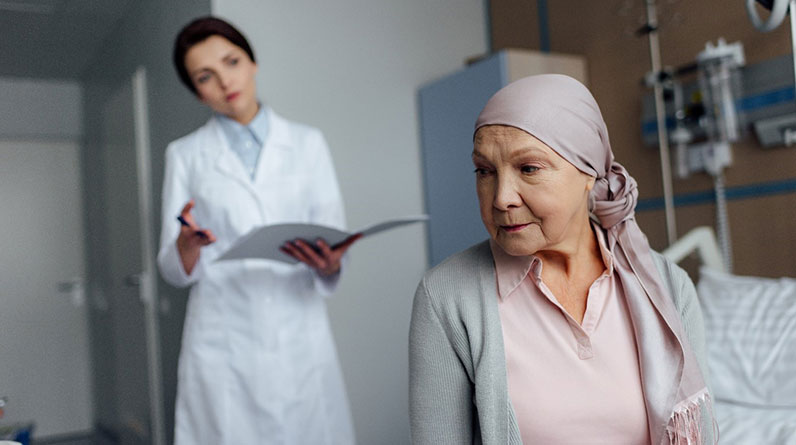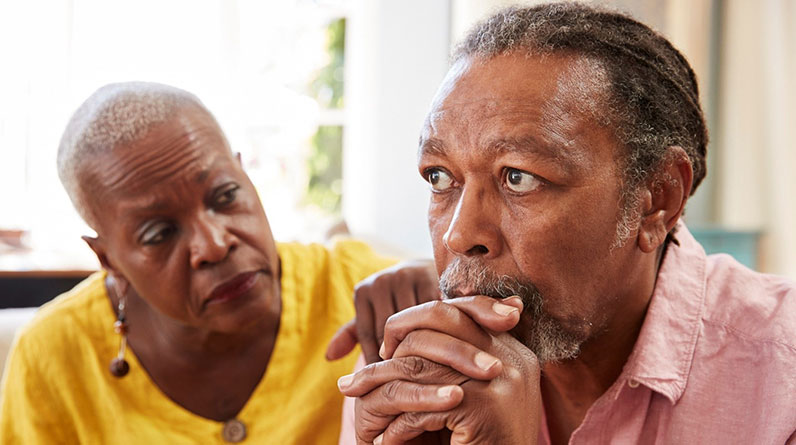
**Affiliate Disclosure**
Please note that some of the links on this site are affiliate links, and at no additional cost to you, we may earn a commission if you decide to make a purchase after clicking through the link. Any commission we make is income for the work put into supplying the information presented on this website.
Senior Health And Cancer
Cancer is a type of disease characterized by the uncontrolled growth and spread of abnormal cells. It can affect people of all ages, but certain types of cancer are more common in older individuals.
As people age, their risk of developing cancer increases due to the cumulative effects of environmental and genetic factors.
In what follows, we will explore some of the most common types of cancer seen in seniors, as well as the risk factors, symptoms, and treatment options for these types of cancer. Understanding the unique challenges and considerations of cancer in seniors can help all individuals to make informed decisions about their healthcare and take steps to reduce their risk of developing cancer.
Common Types of Cancer in Seniors
There are many different types of cancer that can affect people at any age, but at an advancing age, individuals are likely to see some specific types of cancer more often. The following focus will be on three common types of cancer in seniors:
- Skin Cancer
- Breast Cancer
- Prostate Cancer
Skin Cancer
Skin cancer is one of the most common types of cancer in the United States, and it is especially common in older individuals.
We will discuss these types of skin cancer:
- Basal Cell Carcinoma
- Squamous Cell Carcinoma
- Melanoma
Basal cell carcinoma and squamous cell carcinoma are the most common types of skin cancer and are often found on areas of the skin that are exposed to the sun, such as the face, neck, and hands. Melanoma is a more aggressive form of skin cancer that is more likely to spread to other parts of the body.
The incidence of skin cancer increases with age, and seniors are at a higher risk for developing it due to the cumulative effects of sun exposure over the years. To reduce the risk of developing skin cancer, it is important for seniors to protect their skin from the sun by wearing protective clothing, using sunscreen, and seeking shade when the sun is strongest.
Breast Cancer
Breast cancer is the most common type of cancer in women, and it can also occur in men. Breast cancer can occur at any age, but it is more common in women over the age of 50.
There are several different types of breast cancer, three of the most common being:
- Infiltrating ductal carcinoma
- Infiltrating lobular carcinoma
- Mixed ductal/lobular carcinoma
Infiltrating ductal carcinoma is a type of breast cancer that begins in the cells that line the milk ducts and grows into surrounding breast tissue. It is the most common type of breast cancer, accounting for about 80% of all breast cancer cases.
Infiltrating lobular carcinoma is another common type of breast cancer. It begins in the cells that line the milk-producing lobules and also grows into the surrounding breast tissue. This type of breast cancer is less common and accounts for about 8-10% of all breast cancer cases.
Finally, mixed ductal/lobular carcinoma is a type of breast cancer that includes features of both infiltrating ductal carcinoma and infiltrating lobular carcinoma. This type of breast cancer is the most rare and accounts for about 5-7% of all breast cancer cases.
Risk factors for breast cancer include family history, certain inherited gene mutations, and certain lifestyle factors, such as alcohol consumption and smoking. To reduce the risk of breast cancer, it is important for seniors to get regular screenings, maintain a healthy weight, and live a healthy lifestyle.
Prostate Cancer
Prostate cancer is the most common type of cancer in men in the United States and the second most common cancer worldwide according to the World Health Organization. It’s also more common in seniors.
The prostate gland is a small, walnut-sized gland located just below the bladder in men. It produces the fluid that carries and nourishes sperm.
The most common type of prostate cancer is adenocarcinoma. This type of cancer develops in the glandular cells of the prostate. Adenocarcinoma accounts for about 95% of all prostate cancer cases.
Other types of prostate cancer include small cell carcinoma, transitional cell carcinoma, and squamous cell carcinoma. These types of prostate cancer are less common and tend to be more aggressive than adenocarcinoma.
Risk factors for prostate cancer include age, family history, and certain inherited gene mutations. To reduce the risk of prostate cancer, it is important for seniors to get regular screenings and maintain a healthy diet and lifestyle.
Treating Cancer in Seniors
Treatment for cancer in seniors can be complex due to the unique challenges and considerations that come with aging. Seniors may have other health conditions that need to be taken into account when selecting a treatment plan, and they may be more sensitive to certain medications and treatments.
The treatment recommended will depend on the type and stage of cancer, as well as the location and size of the tumor. The most common types of treatment include chemotherapy, radiation therapy, immunotherapy, and surgery.
It is important for seniors to discuss all of their treatment options with their healthcare team and to consider all alternatives when deciding on a treatment plan. Seniors may also want to consider seeking a second opinion from another healthcare provider to ensure that they are making an informed decision.
Final Thoughts
Skin cancer, breast cancer, and prostate cancer are three common types of cancer that can affect seniors. It is important for seniors to be aware of the risk factors associated with these cancers and to take any possible steps to prevent their occurrence.
This can include protecting the skin from the sun, getting regular screenings, and maintaining a healthy diet and lifestyle.





